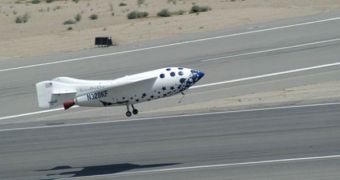As far back as 2004, SpaceShipOne broke a number of barriers, when it became the first privately built craft able to reach suborbital heights on its own. Built by Mojave, California-based Scaled Composites, the aircraft was able to secure the $10-million Ansari X Prize, after it performed three successful flights, in the Mojave Desert. Now, at the same facility, WhiteKnightTwo, a new carrier aircraft, and SpaceShipTwo, the sleek, six-passenger successor of SpaceShipOne, are ready to launch.
WhiteKnightTwo is designed specifically to carry SpaceShipTwo as high up as possible, and then release it. The passenger craft would then fire up its engines, and climb even higher into the atmosphere, to the fringes of space. It would then enter a plunge, and return to the Mojave Air and Space Port, from which it took off. The endeavor is supported by Virgin Galactic and its British entrepreneur, Sir Richard Branson. Microsoft Co-founder Paul Allen financed SpaceShipOne.
“Our big milestone of 2004 occurred on June 21, the date of the first non-government manned spaceflight. The X Prize flights were an opportunity for our sponsor and our employees to get a 'well-done bonus' and to show that our June accomplishment was not a lucky fluke [...] that it really is feasible for low-cost space access to be offered to the public,” Burt Rutan, the leader of the Scaled Composites team, explains. “SpaceShipOne was my 39th manned aircraft type to be flight tested and was clearly the most significant. It was my last design, an opportunity to hand over the reins to the very talented young designers at Scaled,” he adds, quoted by Space.
With the current economic climate, it's very likely that private spaceflight will become a highly profitable business. NASA will still need to be able to send astronauts to orbit, for example. However, it will only be able to do so by renting a seat on an outbound Soyuz capsule. But, if the space agency wants to remain independent of RosCosmos, then it will need contracts with private American companies that can get the job done. In addition, there are numerous people who want to see the Earth from above, and therefore endeavors providing this service are likely to thrive, analysts say.

 14 DAY TRIAL //
14 DAY TRIAL //